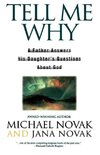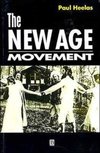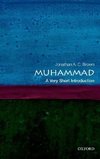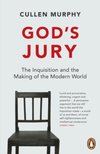
1864 in Europe
Source: Wikipedia. Pages: 29. Chapters: 1864 elections in Europe, 1864 in Austria, 1864 in Croatia, 1864 in Denmark, 1864 in England, 1864 in France, 1864 in Ireland, 1864 in Italy, 1864 in Lithuania, 1864 in Norway, 1864 in Russia, 1864 in Scotland, 1864... Viac o knihe
Produkt je dočasne nedostupný
13.90 €
bežná cena: 15.80 €
O knihe
Source: Wikipedia. Pages: 29. Chapters: 1864 elections in Europe, 1864 in Austria, 1864 in Croatia, 1864 in Denmark, 1864 in England, 1864 in France, 1864 in Ireland, 1864 in Italy, 1864 in Lithuania, 1864 in Norway, 1864 in Russia, 1864 in Scotland, 1864 in the United Kingdom, Second Schleswig War, Russian-Circassian War, Lithuanian press ban, Judicial reform of Alexander II, Battle of Dybbøl, Battle of Lundby, Raffles v Wichelhaus, Battle of Heligoland, Orgueil, September Convention, St Mary's Church, Cove Bay, 1864 English cricket season, 1864 in Wales, Evacuation of Dannevirke, Battle of Als, Great Sheffield Flood, Treaty of London, Battle of Jasmund, Treaty of Vienna, Battle of Sankelmark, The Scot Abroad, Dalmatian parliamentary election, 1864. Excerpt: The Second Schleswig War (Danish: ; German: ) was the second military conflict as a result of the Schleswig-Holstein Question. It began on 1 February 1864, when Prussian forces crossed the border into Schleswig. Denmark fought Prussia and Austria. Like the First Schleswig War (1848-51), it was fought for control of the duchies because of succession disputes concerning the duchies of Holstein and Lauenburg when the Danish king died without an heir acceptable to the German Confederation. Decisive controversy arose due to the passing of the November Constitution, which integrated the Duchy of Schleswig into the Danish kingdom in violation of the London Protocol. Reasons for the war were the ethnic controversy in Schleswig and the co-existence of conflicting political systems within the Danish unitary state. The war ended on 30 October 1864, when the Treaty of Vienna caused Denmark's cession of the Duchies of Schleswig, Holstein, and Saxe-Lauenburg to Prussia and Austria. It was the last victorious conflict of the Austrian Empire/Austria-Hungary in its history. The secessionist movement from Denmark of the large German majority in Holstein and southern Schleswig was suppressed in the First Schleswig War (1848-51), but the movement continued throughout the 1850s and 1860s, as Denmark attempted to integrate the Duchy of Schleswig into the Danish kingdom and proponents of the German unification expressed the wish to include the Danish-ruled duchies of Holstein and Schleswig in a 'Greater Germany'. Holstein was a part of the German Confederation and before 1806 a German fief and completely German, whereas Schleswig was a Danish fief and linguistically mixed between German, Danish and North Frisian. Originally Schleswig was homeland of the Angles and Jutes, when, in the Viking Age, Denmark tried to increase its influence, which was finally rejected by the Holy Roman Empire after several wars with Denmark. However, the northern and middle parts of Schleswig (up to the Eckernf
- Vydavateľstvo: Books LLC, Reference Series
- Formát: Paperback
- Jazyk:
- ISBN: 9781157736646


 Anglický jazyk
Anglický jazyk 









